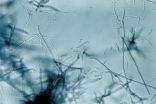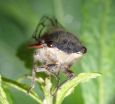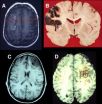(Press-News.org) PROVIDENCE, R.I. – A new study from Bradley Hospital has identified a genetic change in a recently identified autism-associated gene, which may provide further insight into the causes of autism. The study, now published online in the Journal of Medical Genetics, presents findings that likely represent a definitive clinical marker for some patients' developmental disabilities.
Using whole-exome sequencing – a method that examines the parts of genes that regulate protein, called exons - the team identified a genetic change in a newly recognized autism-associated gene, Activity-Dependent Neuroprotective Protein (ADNP), in a girl with developmental delay. This change in the ADNP gene helps explain the cause of developmental delay in this patient. This same genetic change in ADNP was also found in a boy who was diagnosed with autism.
The ADNP gene plays an important role in regulation of early brain development. Recently, genetic changes in this gene have been found to cause a novel genetic syndrome associated with autism. Changes in this gene may be among the most common causes of autism.
"Genetic testing is a very powerful diagnostic tool for individuals with developmental delay," said Eric Morrow, M.D., Ph.D., director of the Developmental Disorder Genetics Research Program at Bradley Hospital and lead author of the study. "Through genetic testing, which is available to some in the clinical setting as well as in research, a medical diagnosis is possible for a large subset of patients."
Morrow continued, "Genetic changes in ADNP are highly associated with autism and are found in at least .17 percent of autism cases. In these patients, changes in this gene represent an important part of the medical cause for developmental delay and/or autism. The use of these genome-wide sequencing methods in patients with developmental disorders is one of the best examples of the applications of modern genomics in clinical practice."
This study represents one of the first publications resulting in part from Morrow's work with the Rhode Island Collaborative for Autism Research and Treatment (RI-CART), which is co-led by Morrow. Funding for RI-CART is provided in part by a grant from the Simons Foundation for Autism Research and also through support from the Brown Institute for Brain Science (BIBS), the Norman Prince Neuroscience Institute at Rhode Island Hospital, the Department of Psychiatry and Human Behavior at Brown University, Women & Infants Hospital and the Groden Network. This cross-disciplinary collaboration, including the work of Chanika Phornphutkul, M.D., director of Hasbro Children's Hospital's division of Clinical Genetics, and the paper's lead authors from several departments and training programs, represents an important development in research and clinical care for patients.
INFORMATION:
Morrow's affiliations are Bradley Hospital, a partner in the Lifespan health system in Rhode Island, and Brown University. He is also director of the Developmental Disorder Genetics Research Program and an assistant professor in the department of molecular biology, cell biology and biochemistry at Brown University.
About Bradley Hospital
Founded in 1931, Bradley Hospital, located in East Providence, R.I., was the nation's first psychiatric hospital devoted exclusively for children and adolescents. It remains a nationally recognized center for children's mental health care, training and research. Bradley Hospital was awarded the distinction of 'Top Performer on Key Quality Measures' for both 2011 and 2012 by The Joint Commission, the leading accreditor of health organizations in the U.S. Bradley Hospital is the only hospital in Rhode Island and the only psychiatric hospital in New England to receive this designation. Bradley Hospital is a member of the Lifespan health system and is a teaching hospital for The Warren Alpert Medical School of Brown University. Follow us on Facebook and on Twitter (@BradleyHospital).
Bradley Hospital collaborative study identifies genetic change in autism-related gene
Changes in ADNP gene may be among the most common causes of autism
2014-08-28
ELSE PRESS RELEASES FROM THIS DATE:
Yale study identifies possible bacterial drivers of IBD
2014-08-28
Yale University researchers have identified a handful of bacterial culprits that may drive inflammatory bowel diseases (IBD) such as Crohn's disease and ulcerative colitis, using patients' own intestinal immune responses as a guide.
The findings are published Aug. 28 in the journal Cell.
Trillions of bacteria exist within the human intestinal microbiota, which plays a critical role in the development and progression of IBD. Yet it's thought that only a small number of bacterial species affect a person's susceptibility to IBD and its potential severity.
"A handful ...
Drug shows promise against Sudan strain of Ebola in mice
2014-08-28
August 28, 2014 — (BRONX, NY) — Researchers from Albert Einstein College of Medicine of Yeshiva University and other institutions have developed a potential antibody therapy for Sudan ebolavirus (SUDV), one of the two most lethal strains of Ebola. A different strain, the Zaire ebolavirus (EBOV), is now devastating West Africa. First identified in 1976, SUDV has caused numerous Ebola outbreaks (most recently in 2012) that have killed more than 400 people in total. The findings were reported in ACS Chemical Biology.
Between 30 and 90 percent of people infected with Ebola ...
NASA sees a weaker Tropical Storm Marie
2014-08-28
When NOAA's GOES-West satellite captured an image of what is now Tropical Storm Marie, weakened from hurricane status on August 28, the strongest thunderstorms were located in the southern quadrant of the storm.
NOAA's GOES-West satellite captured an image of Marie on August 28 at 11 a.m. EDT. Bands of thunderstorms circled the storm especially to the north. The National Hurricane Center noted that Marie has continued to produce a small area of convection (rising air that forms the thunderstorms that make up Marie) south and east of the center during some hours on the ...
DeVincenzo study breakthrough in RSV research
2014-08-28
MEMPHIS, Tenn. – The New England Journal of Medicine published research results on Aug. 21 from a clinical trial of a drug shown to safely reduce the viral load and clinical illness of healthy adult volunteers intranasally infected with respiratory syncytial virus (RSV).
Le Bonheur Children's Hospital and the University of Tennessee Health Science Center researcher Infectious Disease Specialist John DeVincenzo, MD, is lead author of this study.
RSV is the most common cause of lower respiratory tract infections in young children in the United States and worldwide. ...
Small molecule acts as on-off switch for nature's antibiotic factory
2014-08-28
DURHAM, N.C. -- Scientists have identified the developmental on-off switch for Streptomyces, a group of soil microbes that produce more than two-thirds of the world's naturally derived antibiotic medicines.
Their hope now would be to see whether it is possible to manipulate this switch to make nature's antibiotic factory more efficient.
The study, appearing August 28 in Cell, found that a unique interaction between a small molecule called cyclic-di-GMP and a larger protein called BldD ultimately controls whether a bacterium spends its time in a vegetative state or ...
Second-hand e-cig smoke compared to regular cigarette smoke
2014-08-28
E-cigarettes are healthier for your neighbors than traditional cigarettes, but still release toxins into the air, according to a new study from USC.
Scientists studying secondhand smoke from e-cigarettes discovered an overall 10-fold decrease in exposure to harmful particles, with close-to-zero exposure to organic carcinogens. However, levels of exposure to some harmful metals in second-hand e-cigarette smoke were found to be significantly higher.
While tobacco smoke contains high levels of polycyclic aromatic hydrocarbons – cancer-causing organic compounds – the level ...
Healthy Moms program helps women who are obese limit weight gain during pregnancy
2014-08-28
PORTLAND, Ore., August 28, 2014 — A new study finds that women who are obese can limit their weight gain during pregnancy using conventional weight loss techniques including attending weekly group support meetings, seeking advice about nutrition and diet, and keeping food and exercise journals.
Results of the Healthy Moms study, published in Obesity, also show that obese women who limit their weight gain during pregnancy are less likely to have large-for-gestational age babies which can complicate delivery and increase the baby's risk of becoming obese later in life.
"Most ...
University of Montana cicada study discovers 2 genomes that function as 1
2014-08-28
MISSOULA, Mont. – Two is company, three is a crowd. But in the case of the cicada, that's a good thing.
Until a recent discovery by a University of Montana research lab, it was thought that cicadas had a symbiotic relationship with two important bacteria that live within the cells of its body. Since the insect eats a simple diet consisting solely of plant sap, it relies on these bacteria to produce the nutrients it needs for survival.
In exchange, those two bacteria, Hodgkinia and Sulcia, live comfortably inside the cicada. Since all three divvy up the nutritional roles, ...
Non-adaptive evolution in a cicada's gut
2014-08-28
Organisms in a symbiotic relationship will often shed genes as they come to rely on the other organism for crucial functions. But now researchers have uncovered an unusual event in which a bacterium that lives in a type of cicada split into two species, doubling the number of organisms required for the symbiosis to survive.
Cicadas of the genus Tettigades feed only on sap they suck out of plants. To create some of the essential amino acids they rely on two bacterial helpers — Candidatus Hodgkinia cicadicola and Candidatus Sulcia muelleri — with which they have lived in ...
How studying damage to the prefrontal lobe has helped unlock the brain's mysteries
2014-08-28
Until the last few decades, the frontal lobes of the brain were shrouded in mystery and erroneously thought of as nonessential for normal function—hence the frequent use of lobotomies in the early 20th century to treat psychiatric disorders. Now a review publishing August 28 in the Cell Press journal Neuron highlights groundbreaking studies of patients with brain damage that reveal how distinct areas of the frontal lobes are critical for a person's ability to learn, multitask, control their emotions, socialize, and make real-life decisions. The findings have helped experts ...
LAST 30 PRESS RELEASES:
Cancer is a disease of aging, but studies of older adults sorely lacking
Dietary treatment more effective than medicines in IBS
Silent flight edges closer to take off, according to new research
Why can zebrafish regenerate damaged heart tissue, while other fish species cannot?
Keck School of Medicine of USC orthopaedic surgery chair elected as 2024 AAAS fellow
Returning rare earth element production to the United States
University of Houston Professor Kaushik Rajashekara elected International Fellow of the Engineering Academy of Japan
Solving antibiotic and pesticide resistance with infectious worms
Three ORNL scientists elected AAAS Fellows
Rice bioengineers win $1.4 million ARPA-H grant for osteoarthritis research
COVID-19 booster immunity lasts much longer than primary series alone, York University-led study shows
Bentham Science joins United2Act
When thoughts flow in one direction
Scientists identify airway cells that sense aspirated water and acid reflux
China’s major cities show considerable subsidence from human activities
Drugs of abuse alter neuronal signaling to reprioritize use over innate needs
Mess is best: disordered structure of battery-like devices improves performance
Skyrmions move at record speeds: a step towards the computing of the future
A third of China’s urban population at risk of city sinking, new satellite data shows
International experts issue renewed call for Global Plastics Treaty to be grounded in robust science
Novel material supercharges innovation in electrostatic energy storage
A common pathway in the brain that enables addictive drugs to hijack natural reward processing has been identified by Mount Sinai
China’s sinking cities indicate global-scale problem, Virginia Tech researcher says
Study finds potential new treatment path for lasting Lyme disease symptoms
Metabolic health before vaccination determines effectiveness of anti-flu response
Department of Energy announces $16 million for traineeships in accelerator science & engineering
MRE 2024 Publication of Enduring Significance Awards
UCalgary researchers quantify the connection between homelessness and mental health disorders
Fourteen years after the Gulf of Mexico oil spill, endemic fishes face an uncertain future
For more open and equitable public discussions on social media, try “meronymity”
[Press-News.org] Bradley Hospital collaborative study identifies genetic change in autism-related geneChanges in ADNP gene may be among the most common causes of autism






